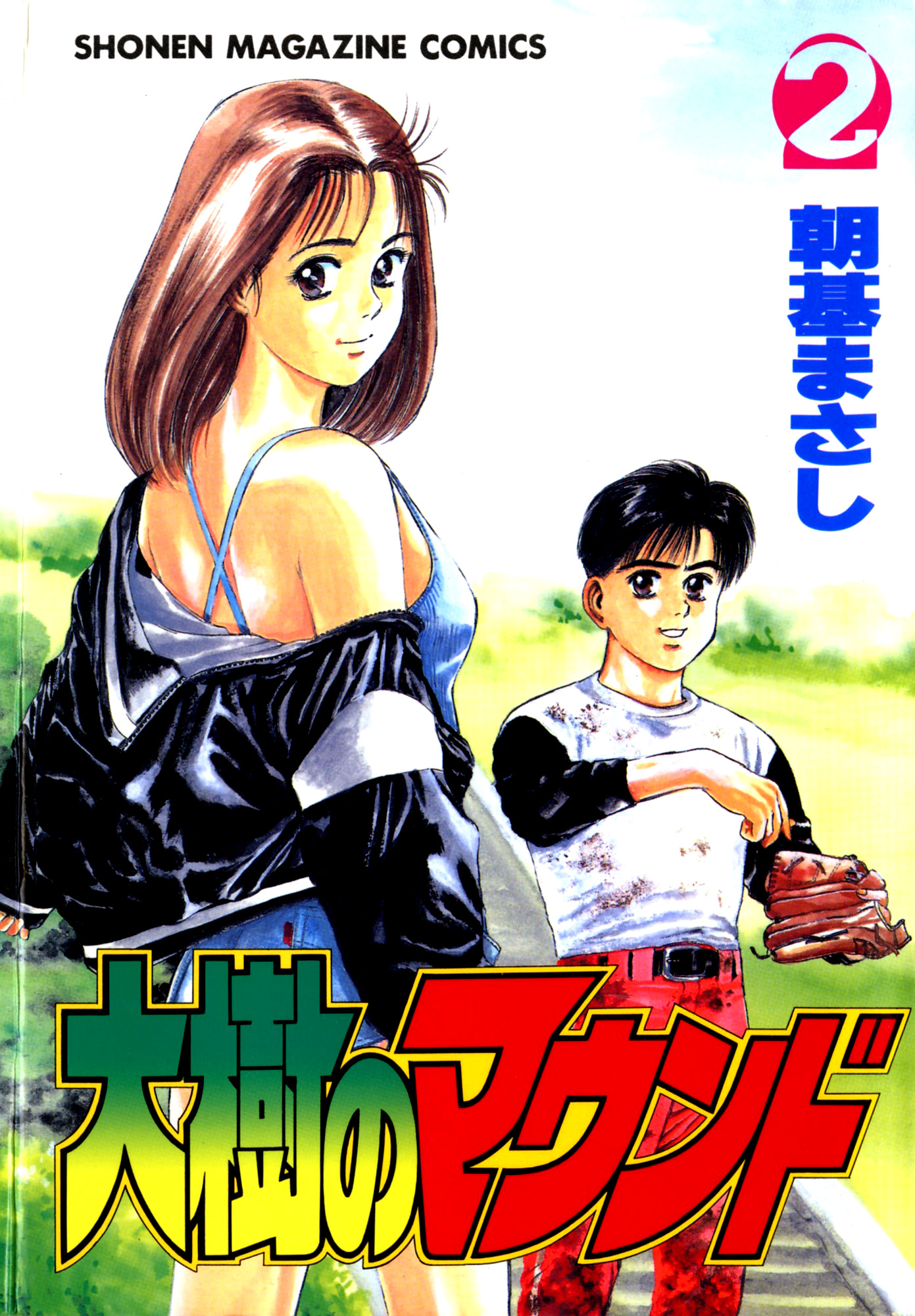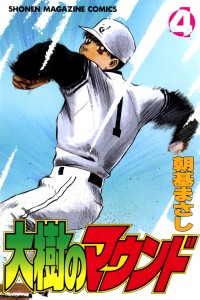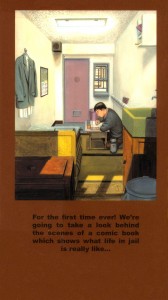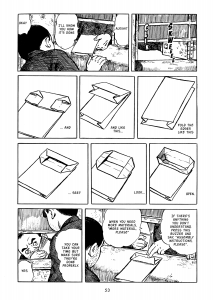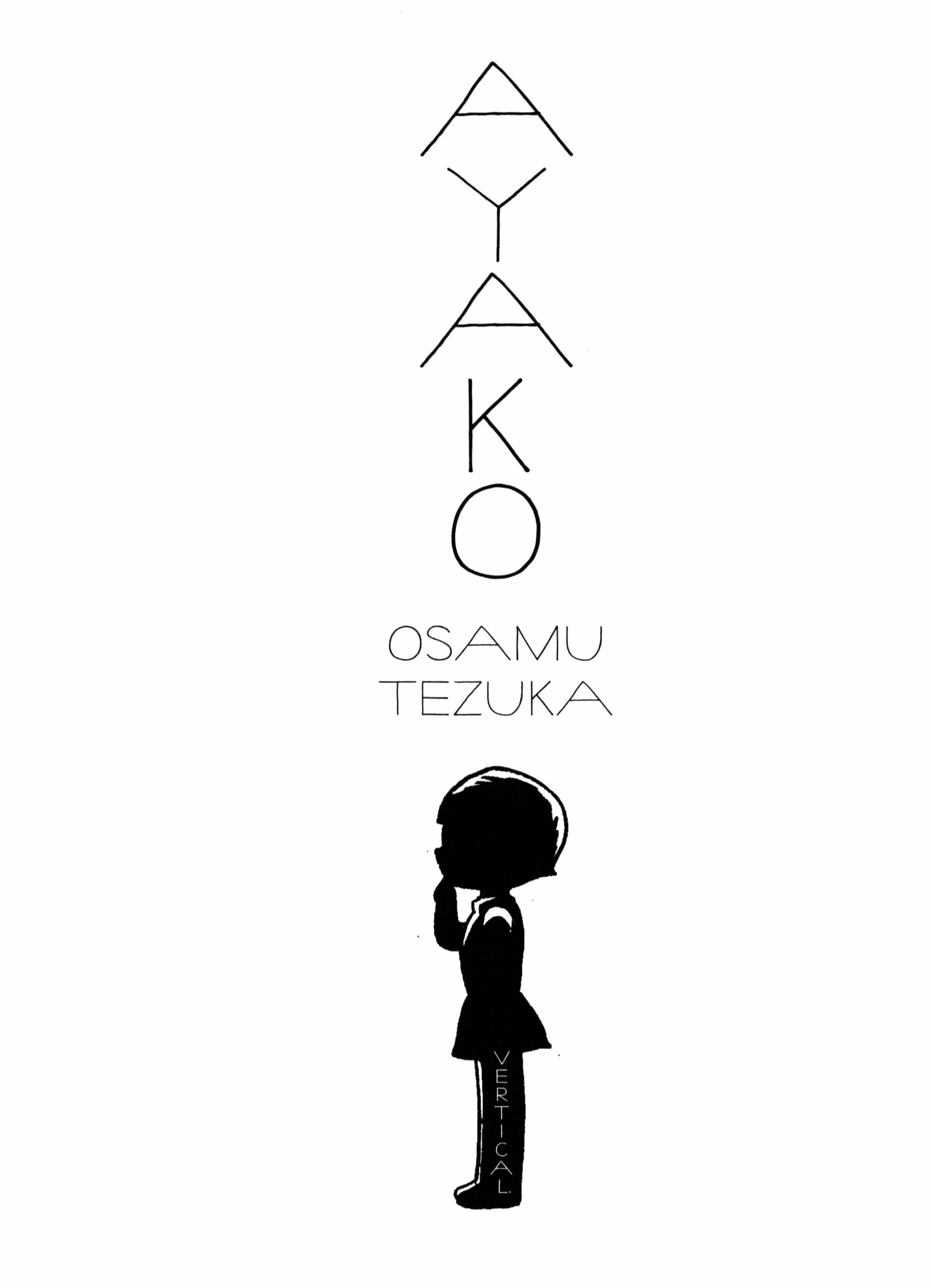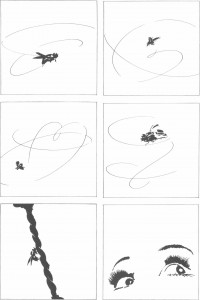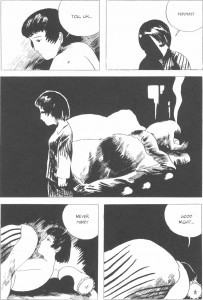Ayako by Osamu Tezuka is supposed to be a classic of the genre by the supposed greatest mangaka of all time. Or so one would suppose to hear the way people go on and on about him. To be honest I’m not that familiar with Tezuka’s works apart from a little Astroboy (the new movie) and a little Black Jack, but if Ayako is anything to go by, I’m not missing much.
Btw, I’m not using the cover as a featured image as I usually do, because the front cover is a naked girl and the back cover is a silhouette of a woman hanging herself. When a ‘classic’ manga has to resort to cheap titillation to sell itself, that should tell you everything you need to know. Anyway, on with the official blurb:
Opening a few years after the end of World War II and covering almost a quarter-century, here is comics master Osamu Tezuka’s most direct and sustained critique of Japan’s fate in the aftermath of total defeat. Unusually devoid of cartoon premises yet shot through with dark voyeuristic humor, Ayako looms as a pinnacle of Naturalist literature in Japan with few peers even in prose, the striking heroine a potent emblem of things left unseen following the war.
 The year is 1949. Crushed by the Allied Powers, occupied by General MacArthur’s armies, Japan has been experiencing massive change. Agricultural reform is dissolving large estates and redistributing plots to tenant farmers—terrible news, if you’re landowners like the archconservative Tenge family.
The year is 1949. Crushed by the Allied Powers, occupied by General MacArthur’s armies, Japan has been experiencing massive change. Agricultural reform is dissolving large estates and redistributing plots to tenant farmers—terrible news, if you’re landowners like the archconservative Tenge family.
For patriarch Sakuemon, the chagrin of one of his sons coming home alive from a P.O.W. camp instead of having died for the Emperor is topped only by the revelation that another of his is consorting with “the reds.” What solace does he have but his youngest Ayako, apple of his eye, at once daughter and granddaughter?
Delving into some of the period’s true mysteries, which remain murky to this day, Tezuka’s Zolaeqsque tapestry delivers thrill and satisfaction in spades. Another page-turning classic from an irreplaceable artist who was as astute an admirer of the Russian masters and Nordic playwrights as of Walt Disney, Ayako is a must-read for comics connoisseurs and curious literati.
 All right, let’s get one thing out of the way first – this is no “sustained critique of Japan’s” blah blah blah anything. For the first three or four chapters, yes, Tezuka does cover some of the tensions brought about by the occupation and the conflicting interests of conqueror and subject.
All right, let’s get one thing out of the way first – this is no “sustained critique of Japan’s” blah blah blah anything. For the first three or four chapters, yes, Tezuka does cover some of the tensions brought about by the occupation and the conflicting interests of conqueror and subject.
But that’s just in the very beginning, after that Ayako devolves into a bodice-ripping page-turner in the vein of Sidney Sheldon or V.C. Andrews. Sex, incest, betrayals, conspiracy, more sex and then Tezuka throws in a typically Japanese nonsensical downer ending and bam, we have a classic.
The tl;dr version of the story is that Ayako, the title character is born when Ichiro Tenge offers his wife Su’e up to his dad Sakuemon in exchange for an inheritance. Ayako is unlucky enough to learn too much of a crime committed by her uncle/half-brother Jiro Tenge and is locked away in a basement for 23 years to keep her quiet.
During that time she manages to have an affair with her uncle/half-brother Shiro Tenge, but she eventually breaks out, makes her way over to Jiro, acts crazy for a while, hooks up with the son of Jiro’s sworn enemy and then everybody except Ayako dies in a cave-in caused by Shiro, his way of purging the land of the treacherous, incestuous Tenge clan.
 All that took about 600+ pages, but as I said it was quite the page-turner in a train-wreck kind of way, so I read the whole thing in one night. And I suppose it IS a classic, in the way some of Sidney Sheldon’s books are classics – classics of beach literature, that is. I’m comparing it to Sheldon’s stuff because Ayako contains the same mix of sex, crime and tragedy that he was so famous for.
All that took about 600+ pages, but as I said it was quite the page-turner in a train-wreck kind of way, so I read the whole thing in one night. And I suppose it IS a classic, in the way some of Sidney Sheldon’s books are classics – classics of beach literature, that is. I’m comparing it to Sheldon’s stuff because Ayako contains the same mix of sex, crime and tragedy that he was so famous for.
If that’s the kind of drama that appeals to you, Ayako is right up your alley. It’s a different kind of classic from what I was expecting, but I suppose 70’s manga fans like a good twisted drama as much as the next person, which is why this manga is (undeservingly, IMO) famous.
For all that the main character is female, though, the women in this manga come across very poorly indeed. It might have been deliberate, to show how post-war Japan was, and in many ways still is a man’s world. Either way the women in Ayako are all helpless victims and sex objects relegated to one of two roles: housewife or whore (and in one unfortunate case, both).
Oh, but it gets worse. Not only are they helpless whores and housewives but also any attempt they make to break out of those roles is almost immediately punished with death as if to say “Stay in the kitchen/bedroom, woman!”
 For example Su’e, Ayako’s mother, spends years as a quiet housewife and the family patriarch’s sex slave. When she finally tries to leave with Ayako, her husband kills her. End of her story.
For example Su’e, Ayako’s mother, spends years as a quiet housewife and the family patriarch’s sex slave. When she finally tries to leave with Ayako, her husband kills her. End of her story.
Then there’s Jiro’s temporary squeeze Michiko (or was it Machiko?). She’s fine when she’s obediently sleeping with military officers on his orders, but the minute she tries to rebel against that, boom kaboom! No more Michiko.
Or let’s take Naoko, the Tenge little sister who spends years as a dutiful housewife. The minute she tries to get revenge on Jiro for killing her old boyfriend she gets drawn back into the family cesspit and alas, no more Naoko.
The two women who do survive the whole fiasco, Ayako herself and her stepmother/grandmother, seemingly only do so because they don’t bother fighting against their roles or against the men in their lives. The stepmother because she never even attempts to resist and Ayako because she gave up after a brief struggle. Sure she runs away from home eventually, but it’s all a matter of jumping from the care of one man (Shiro) to another (Jiro) and to another (Hanao). Just when the manga is about to get interesting, when Ayako is finally all alone, it ends. So… yeah.
Long story short, if you want something tasteful and classy, don’t get Ayako. If you want a trashy page-turner that will leave a bad taste in your mouth and leave you wondering what’s so great about Osamu Tezuka, get Ayako . End of story.
. End of story.
(~マウンドの少女~) by Natsuko Heiuchi.
he’s hitting home runs and batting better and running faster than ever before. Shiori meanwhile hits a slump and begins to contemplate quitting baseball altogether. And on top of all that there are rumors her family might be moving away soon. What’s going to happen to this hurdle-fraught relationship? Does Moritake stand a chance with Shiori?
 Heh, find out for yourself, I’m not telling. :-p I recommend you read it for yourself, seeing as it’s only 2 volumes long with full furigana. Moritake’s character is well-fleshed out and easy to relate to while Shiori – and the rest of the cast, come to think of it – remains an enigma until the end, but that just makes Moritake’s feelings for her all the more understandable. He’s a kid trying to be an adult and stumbling in all the typical kiddult ways, it’s just too cute.
Heh, find out for yourself, I’m not telling. :-p I recommend you read it for yourself, seeing as it’s only 2 volumes long with full furigana. Moritake’s character is well-fleshed out and easy to relate to while Shiori – and the rest of the cast, come to think of it – remains an enigma until the end, but that just makes Moritake’s feelings for her all the more understandable. He’s a kid trying to be an adult and stumbling in all the typical kiddult ways, it’s just too cute.
